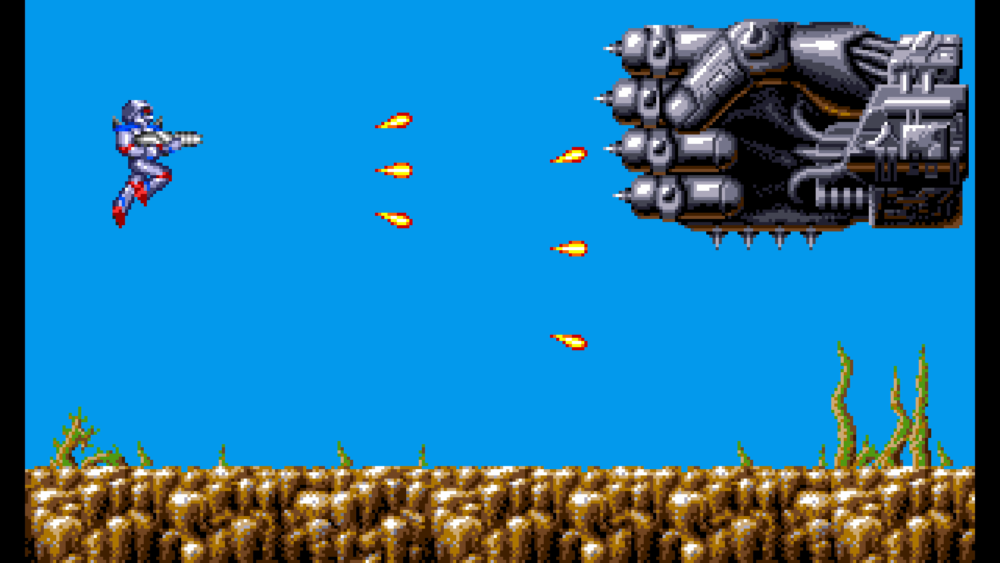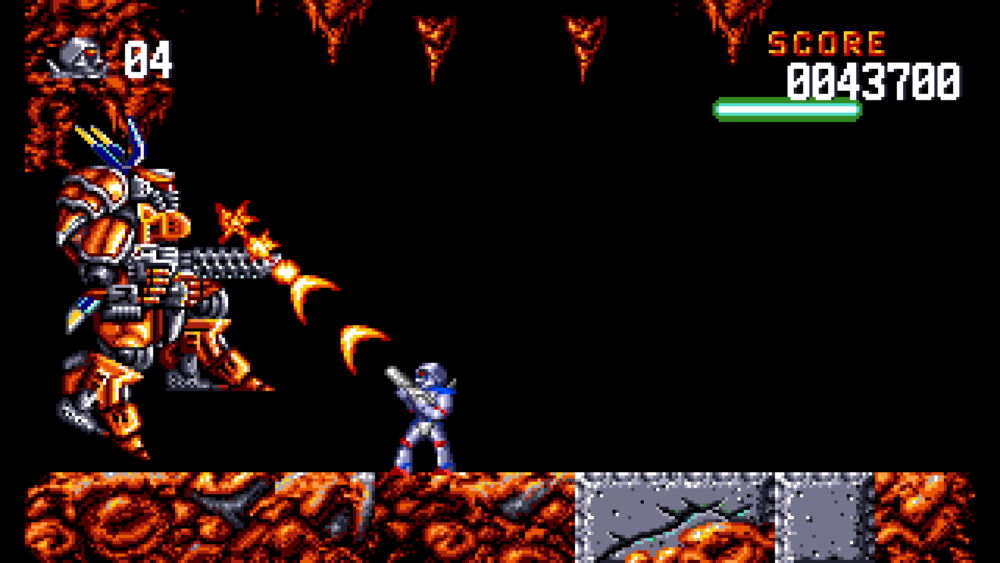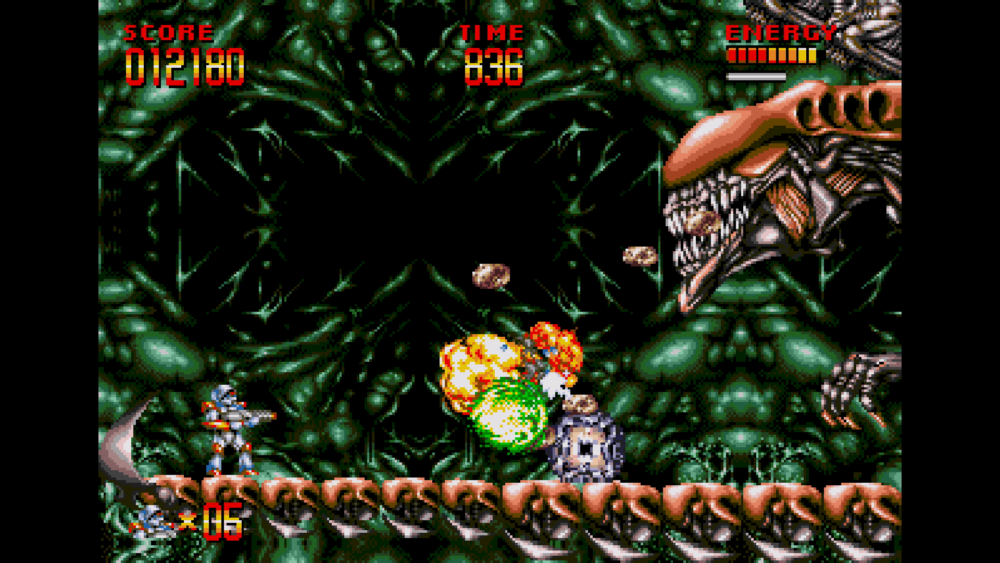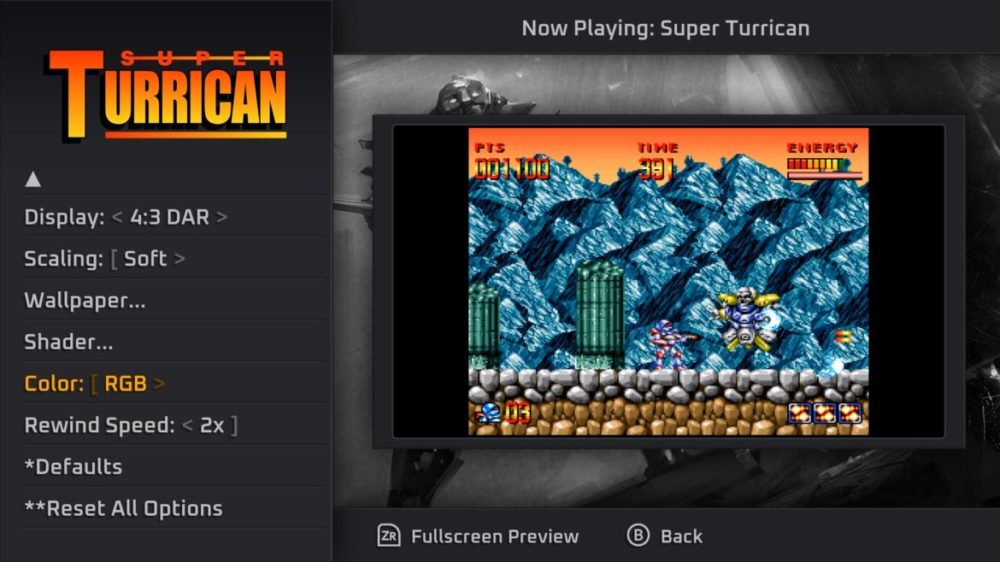TL;DR
Turrican Flashback collects four classic side-scrolling shooters, offering a stylish blend of powerful weapons and expansive levels that made the Amiga 500 a gaming icon. Featuring the original Turrican, Turrican II (with that legendary soundtrack!), Mega Turrican, and Super Turrican, this collection surprisingly holds up with responsive controls and deep exploration for its era. While it misses a few key entries and the console versions highlight the Amiga's superiority, the core gameplay, impressive presentation, and Chris Huelsbeck's iconic music make it a must-have for retro fans. Ready to dive back into this 16-bit action? Read on for the full review.
Even if the name Turrican doesn’t immediately ring a bell, there’s a strong possibility you’re familiar with the soundtrack, composed by the renowned Chris Huelsbeck (Chris Hülsbeck for those who appreciate umlauts). Turrican made a significant impact as a platformer when it debuted on the Amiga 500 in 1990—a stylish, side-scrolling shooter characterized by its emphasis on powerful weaponry, explosive action, and surprisingly expansive levels. Now, it returns in a retro collection featuring four of the game’s iterations, available at a reasonable price in both physical and digital formats. But does it offer more than just a nostalgic revisit for established fans?

Turrican Flashback, the title of this collection, is published by ININ Games and developed in collaboration with Factor 5—the original creators of the games. Factor 5 began with Manfred Trenz, the coder behind the original Turrican on the C64, and later evolved into a team of German indie developers known for pushing the Amiga’s hardware capabilities, under publisher Rainbow Arts, to deliver graphics and soundtracks that rivaled even The Bitmap Brothers. While Nintendo’s 8-bit console was a must-have for many, and the Sega Master System a runner-up, my personal early gaming experience centered on an MSX Spectravideo 728. However, entering junior high school and experiencing the Amiga 500 opened up a completely new gaming landscape. The Amiga 500, in my opinion, was the most influential gaming platform of my formative years (though it faced stiff competition from the frequently rented NES).

This collection includes four titles: Turrican, the original that started it all, and arguably the strongest entry in the anthology. While later ported to other platforms (such as the Atari ST), this recreation of the Amiga 500 version is executed flawlessly. It’s a refined action-adventure with a well-balanced difficulty curve. Turrican II: The Final Fight is perhaps the most recognizable title, largely due to Huelsbeck’s exceptional chiptune soundtrack (which is highly recommended). This installment showcases more advanced technical features, including improved parallax scrolling and the uniquely satisfying light ball weapon that eliminates enemies with bouncing projectiles. However, the game presents a significant difficulty spike and the level design isn’t quite as precise as the original. Next is Mega Turrican, the Mega Drive adaptation of Turrican (3). While technically sound, it leans more heavily into linear jumping and shooting sequences, reducing the emphasis on exploration. Finally, the collection concludes with Super Turrican, the Super Nintendo version of the game. This version introduced a Dolby Surround mix (upgraded from stereo) and represents a hybrid of the first and second games. The console versions of Turrican are certainly playable and enjoyable; however, they highlight the technical superiority of the Commodore Amiga 500 during the 16-bit era. Despite its modest 7 MHz processor clock speed and 512 KB of memory, its custom graphics chip delivered unparalleled visuals (and the NTSC Amiga achieved a stable 60 FPS as early as 1987). Technically, the machine’s Motorola processor was 32-bit, but let’s not get sidetracked by excessive technical detail.

How well do the Turrican games hold up today? Surprisingly well, in my opinion. These are engaging and innovative platformers. The character can transform into a rolling “morph ball” impervious to damage, deploy mines, execute powerful special attacks, and wield an energy whip that can be aimed freely. Furthermore, the Amiga titles offer remarkable exploration for their time, with numerous hidden secrets, secret bosses, and concealed areas. Don’t expect a map function or similar assistance; skillful navigation is paramount.
The games are run via emulation, and users can adjust the display area (original, 4:3 aspect ratio, or stretched to fill a 16:9 widescreen, which is not recommended). Features include save states and rewind functionality, which have become standard in retro emulators to mitigate the inherent difficulty of older games. However, utilizing these features will disable trophy unlocks in the PS4 version (which, incidentally, runs smoothly on the PS5).

Revisiting Turrican after approximately 25 years has been a delightful experience. The presentation remains compelling, the controls feel responsive (even if the jumping sections still demand patience), and Huelsbeck’s soundtrack alone justifies the price of admission. I spent numerous hours engrossed in the first game, coming close to completion (next time!). Assessing its appeal to gamers unfamiliar with the series is challenging, given my pre-existing connection and inherent nostalgia. However, if you appreciate 16-bit retro platformers and the iconic chiptunes of the Amiga era, exploring this collection on PS4 or Switch is highly recommended.
A notable drawback is the absence of a truly comprehensive Turrican collection, which might be expected at this price point. Turrican 3: Payment Day for the Amiga (which I personally missed, having transitioned to PC gaming at that point), a Director’s Cut of the Mega Drive version, and the highly regarded Super Turrican 2 for the SNES are all absent.
Despite this, Turrican Flashback provides a substantial and enjoyable experience, warranting a strong recommendation for both dedicated fans and newcomers to the genre.

